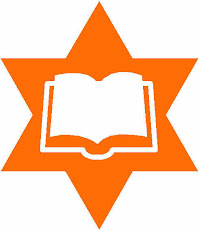We began Mitzvah Heroes in an attempt to fill the gap left by the closing of the Ziv Tzedakah Fund last spring. In 9 months, just over $30,000 has made its way to the very deserving Mitzvah Heroes and their clients in the United States and Israel. We have and will continue to treat all donations and the recipients with the utmost of respect and dignity.
Steve, Bill and I (co-directors of the Mitzvah Heroes Fund, Inc) are conscious that economic times are difficult for many people, and there may be additional hesitation to make donations to Jewish organizations due to recent developments and investment dollars lost due to dishonest people and practices.
The Better Business Bureau recommends that you look for recipient organizations which use no more than 35% of the donations they receive for overhead, publicity, etc. Two recent articles (one by the Associated Press and one by the Boston Globe) indicate that even those guidelines aren't always followed.
All three of us volunteer our time (which helps keep our overhead low) and are able to pass on to our Mitzvah heroes between 95%-97.5% of the funds we receive. We support Mitzvah heroes and organizations with minimal overhead and bureaucratic structures, preferring most of your money to go to direct support of people in need.
We need your help:
- If you're on Facebook, please join our group and suggest that your Facebook friends join our group.
- Consider making a contribution (quick and easy with PayPal from our website WITH OR WITHOUT a PayPal account) to celebrate this milestone; $10.00 or $18.00 goes a long way and is not a small or trivial amount of money to the Mitzvah Heroes Fund (of the donations received this year, over 90% were under $110.00)
- Tell your friends, Rabbis. Teachers, family (regardless of how young or old) about us and let them know that there are options and alternatives for their charitable dollars.
- Remember us when you need to honor or remember someone at a simcha or somber occasion.
In the next month or two, we will send out our first Annual Report describing the people, organizations and programs that WE (you and us together) have supported in the past year. This not only shows who we support and why, but will also add to our transparency as we will show all monies received and how they were distributed. IF YOU WOULD LIKE TO RECEIVE THE NEWSLETTER FROM MITZVAH HEROES, please click here and scroll down to the box on the left-hand side.
Finally, here's a link you may find of interest: Bill, Steve and I were recently inteviewed by a reporter from the Washington Jewish Week. Quite frankly - it was a lot of fun and we got to talk about some very neat Mitzvah heroes!
Wishing you a year filled with the joy of making a difference in the lives of others,
Mary




